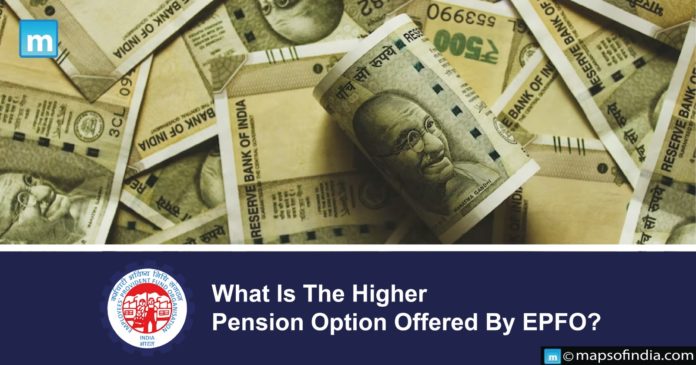The EPFO issued new instructions to employees who opted not to contribute to their pension at a rate exceeding the wage ceiling and remained employed after September 1, 2014. The EPFO now allows subscribers to earn more than the maximum monthly pensionable wage of Rs. 15,000. Employers deduct 8.33% of the “real basic salary” for EPS pension purposes from this amount.
What is the overall pension arrangements structure?
A pension plan was not included in the Workers’ Provident Funds and Other Provisions Act of 1952. In 1995, the EPFO created the EPS, which it now manages. 8.33% of the employers’ PF corpus contribution had to be deposited into the pension fund.
12% of the employee’s base pay, dearness allowance, and retention allowance, if applicable, are contributed to the EPF by both the company and the employee. The full employee contribution goes to the EPF, whereas the employer’s 12% contribution is divided into 8.33% for EPS and 3.67% for the EPF.
1.16% of an employee’s pension is contributed by the government of India. Workers do not make pension contributions. The maximum pensionable wage at the time of EPS’s implementation was Rs 5,000 per month. Later, this was increased to Rs 6,500 and then, as of September 1, 2014, to Rs 15,000. As of right now, the pension contribution is 8.33% of Rs. 15,000 or Rs. 1,250 unless the employee and employer have chosen to contribute at an amount that is higher than the pensionable pay.
What does the new EPFO rule mean?
The retirement fund organisation now permits subscribers to earn more than the monthly pensionable wage ceiling of 15,000 rupees. By the Employee Pension Plan, the employers withhold 8.33% of the “real basic salary” for pension purposes (EPS). The pensionable wage cap was increased by the EPS amendment of August 22, 2014, from 6,500 to 15,00 per month, and members and their employers were permitted to contribute 8.33% of their actual income (if they surpassed the cap) to the EPS.
Who receives EPS pension benefits, and how much?
If an employee has at least 10 years of service and retires at age 58, the EPS will pay them a pension afterwards. A member may be eligible for an early (reduced) pension if they stop working between 50 and 57.
Who can benefit from it?
According to the new EPFO circular, employers and employees can submit a joint option to the regional EPFO office. These fundamental standards are:
- Workers who joined before September 1, 2014, and remained members on or after that date
- Workers who joined before September 1, 2014, and remained members on or after that date
- EPS members who did not exercise the joint option during the prior window, including employers and employees.
How to submit a higher pension application?
Online registration will be available for employees who wish to apply for a greater pension.
- To obtain the application for a higher pension, employees can also contact their regional PF commissioner.
- The EPFO officers will register the application, and the applicant will receive a receipt number.
- The office will examine every instance of a common choice on a higher wage in charge of the appropriate regional PF office. It will then notify applicants of their decision through email, post, and SMS.
- After submitting the joint choice papers and paying any applicable contributions, applicants can record grievances on the EPFiGMS (grievance portal).




